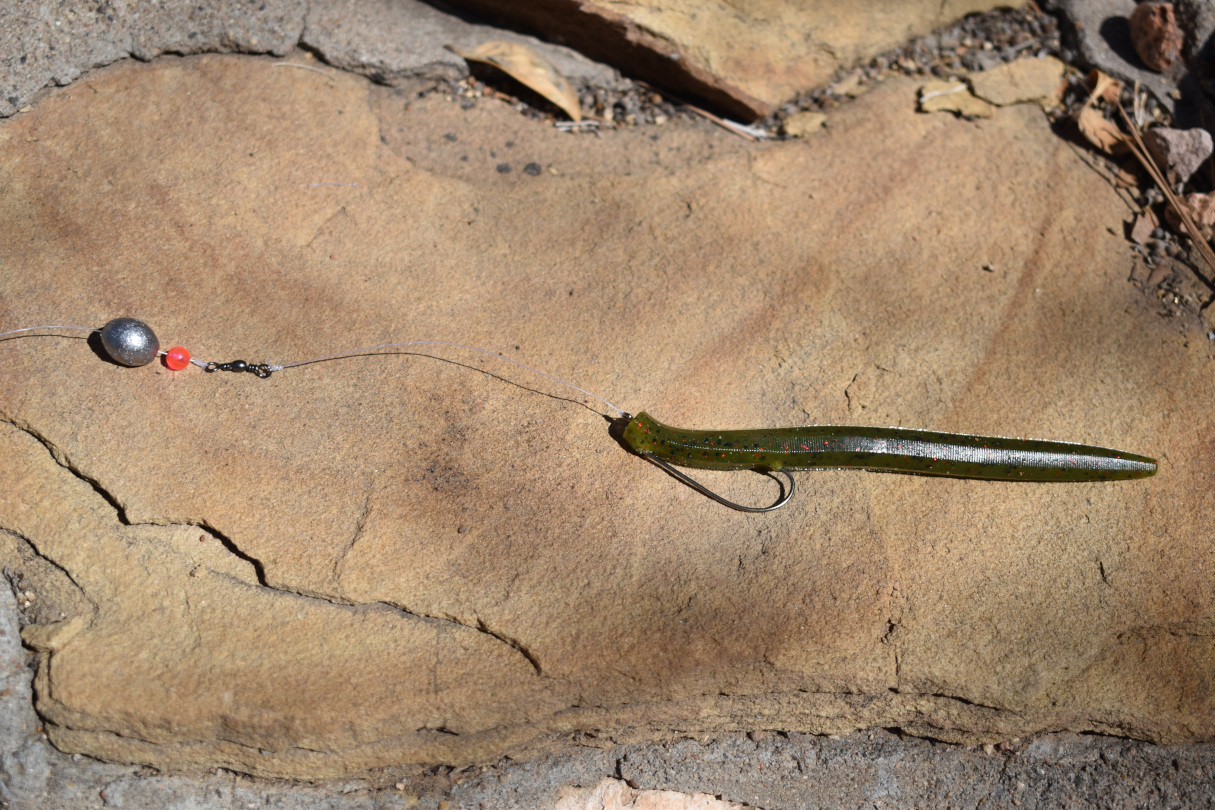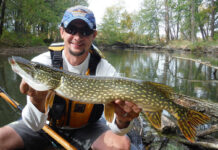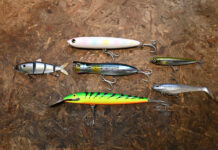Back in the day, pretty much every bass angler fished the Carolina rig. As a kid, I remember heading out on the lake with a bag of egg sinkers, a few beads and swivels in my pocket, and a couple packs of plastic worms. But Carolina rigs aren’t flashy—and this “do-nothing rig” has fallen out of fashion with some anglers who don’t find them much fun to fish.
The “old ball and chain” may not be the most action-packed presentation, but it’s a versatile rig that sometimes brings more bass to the boat than the latest thing the cool kids are casting. They allow you to cover a lot of water with a more subtle presentation than burning a spinner bait or casting crankbaits. It’s an old-school, open water presentation that I’ve rediscovered now that I’ve moved out West near deep canyon reservoirs.
If you’re looking for a versatile system to slay bass down in the depths, here’s how to rig and fish the classic Carolina rig.

How to rig and fish the Carolina rig
How to tie a Carolina rig
The Carolina rig works with a wide range of plastics: ribbon-tail worms, lizards, creatures, flukes, craws, and Senkos. Rigging your favorite plastic Carolina-style is easy:
- Thread your line through an egg sinker (or similar sliding weight).
- Add a bead below the weight and then tie a barrel swivel to the end of your line.
- Tie a short leader of line (often 1-3 feet) to the bottom circle of the barrel swivel.
- Tie on your worm hook.
- Press the hook point into the top tip of your plastic bait about a quarter inch (2-3 worm segments) and then poke the barb back out the side of the plastic.
- Slide the plastic up the hook until its nose is flush with the hook eyelet.
- Twist the hook to align it with the plastic. Then embed the tip of the hook in the bottom of the plastic—at the point that keeps the rig as straight as possible.
Why the Carolina Rig is effective
By separating the plastic body from the weight, the Carolina Rig has several advantages:
- Working the water just off the bottom—where bass feed much of the time
- Freeing your bait to wiggle and flutter unencumbered by the weight
- Letting fish take your bait without feeling the weight
Carolina rigging also lets you cover a lot of water while combing bottom structure. The C-rig is also a poor man’s depth finder. Back before electronics, bass anglers dragged Carolina rigs across the bottom to feel out depth contours and find underwater structure. That heavy weight gives you a lot of feel, so you can sense changes in depth and bottom composition. Plus, you’ll bump into stumps, weed beds, and other cover—which you can fish more slowly.
In short, it’s a good system to work moderate to deep water. And, it’s a search rig to find fish scattered across humps, flats, points, ditches, and channels.
How to fish a Carolina rig
For better or worse, it’s easy to fish this “do-nothing rig.”
Cast out your Carolina Rig and let it sink down to the bottom. If a long leader and heavy weight make the cast cumbersome, go with a sidearm lob cast to get some distance.
You fish these rigs by slowly sweeping your rod to the side and reeling in the slack to creep the weight across the bottom. Dragging the sinker scatters sediment, and this attracts fish. The short leader lets your plastic float just off the bottom and undulate behind that bottom disturbance. That’s a great one-two punch for more bottom-oriented fish.
Expect subtle takes. Most of the time, you’ll just feel some resistance when bass slurp your plastic. When you sense some weight on the end of your line, quickly reel in your slack and set the hook with a long sweep of the rod tip.
Where to fish Carolina rigs
Carolina rigs are solid choices to work deeper water, cover open water, and fish new water.
Since they use heavier sinkers, the rig can get plastics down deep. I mostly fish them in open water: casting across points, dropping them into holes and creek channels, and creeping them down drop-offs.
It’s also the right rig for covering more water. If fish are scattered along flats, humps, and offshore structure, Carolina rigging can get your plastic in front of their face. Just keep in mind that Carolina rigs are not as weedless or snag-resistant as Texas rigs, so it’s better to drag them over harder bottoms and areas with sparse or scattered vegetation—not through heavy weeds and snarls of downed trees.
I also like Carolina rigs for unfamiliar waters. If your fishing kayak isn’t tricked out with electronics, Carolina rigging can help you feel and work underwater structure, so you can fish new lakes, rivers, and ponds more effectively. Now that I’m new to New Mexico, I drag that heavy sinker along the bottom of canyon reservoirs to feel drop-offs and humps, bump into isolated pieces of cover, and sense changes in bottom composition—areas that often hold bass.
Carolina rig setups
Carolina rigging calls for basic terminal tackle:
Rods: Go for a longer, medium-heavy baitcasting rod—7’ 6” is ideal. Longer rods help you handle longer leaders and set the hook when you’re plumbing the depths. Baitcasters provide more power and control, but spinning rods can also work, especially with lighter Carolina rigs in shallower water.
Reels: Reels with higher gear ratios (7.1:1+) will help you reel in slack quickly to set the hook.
Lines: Most anglers prefer fluorocarbon lines for Carolina rigs or a braided main line with a fluorocarbon leader to limit stretch and maximize sensitivity. At the same time, monofilament helps your plastic float off the bottom, so some anglers go that route. You can go with your favorite feel, or you can weigh the pros and cons based on the specific cover and depths you’re fishing.
Sinkers: The ideal sinker size depends on the depth you’re fishing, but ½ oz (shallow water) to 1 oz (deeper water) weights are pretty standard for Carolina rigs. Egg sinkers, bullet sinkers, and tungsten barrel weights all work for this presentation. Lead sinkers are the budget option. Tungsten sinkers will increase your feel.
Beads and Swivels: Choose glass beads for better sound or plastic beads for better durability. I carry size 8 to 12 barrel swivels, depending on where and what I’m fishing.
Leader Lengths: On average, most people tie a 3 to 4 foot leader behind the swivel using either a length of fluorocarbon (more durable and less visible) or monofilament (better float). However, you can go much shorter (colder water, active fish) or a few feet longer based on the depth and temperatures you’re fishing.
Hooks: Your choice of plastic should determine the size and type of hook you use. Wide gap offset worm hooks and extra wide gap hooks in the 3/0 to 4/0 range are pretty standard for the bigger, bulkier plastics that most people throw on a Carolina rig.
Best Plastics for Carolina Rigs
You can rig most plastic bodies Carolina-style for largemouth and smallmouth bass. Here’s a sample of staple plastics:
- Culprit Original Worm
- Berkley Powerbait Power Worm
- Zoom Lizard
- Zoom Super Fluke
- Yamamoto D Shad
- Yamamoto Senko
- Zoom Brush Hog
- Strike King Game Hawg
- Zoom Z Craw
Its popularity has waxed and waned, but the Carolina rig remains a classic way to rig your favorite soft plastic behind a sinker to slaughter largemouth and smallmouth in open water. If you’re looking for a search rig or deep water rig to yank more bass into the boat, it’s a versatile, time-tested system that’s worth knowing how to rig and how to fish.







